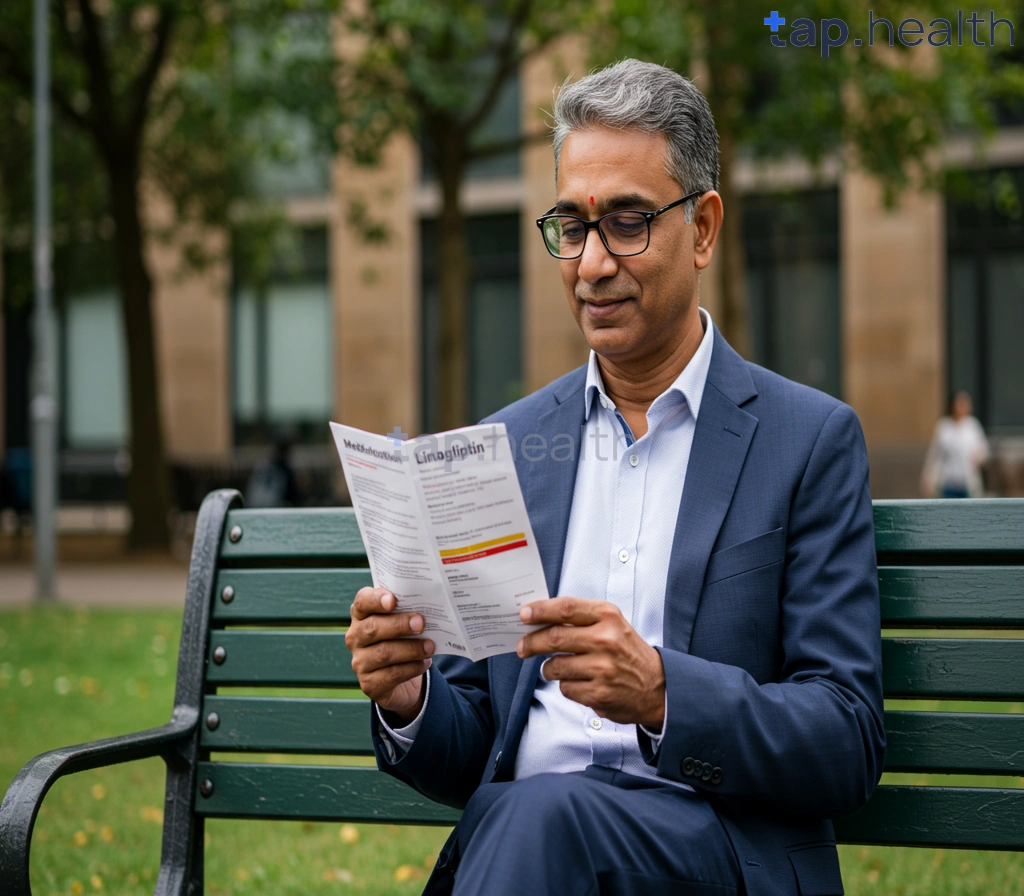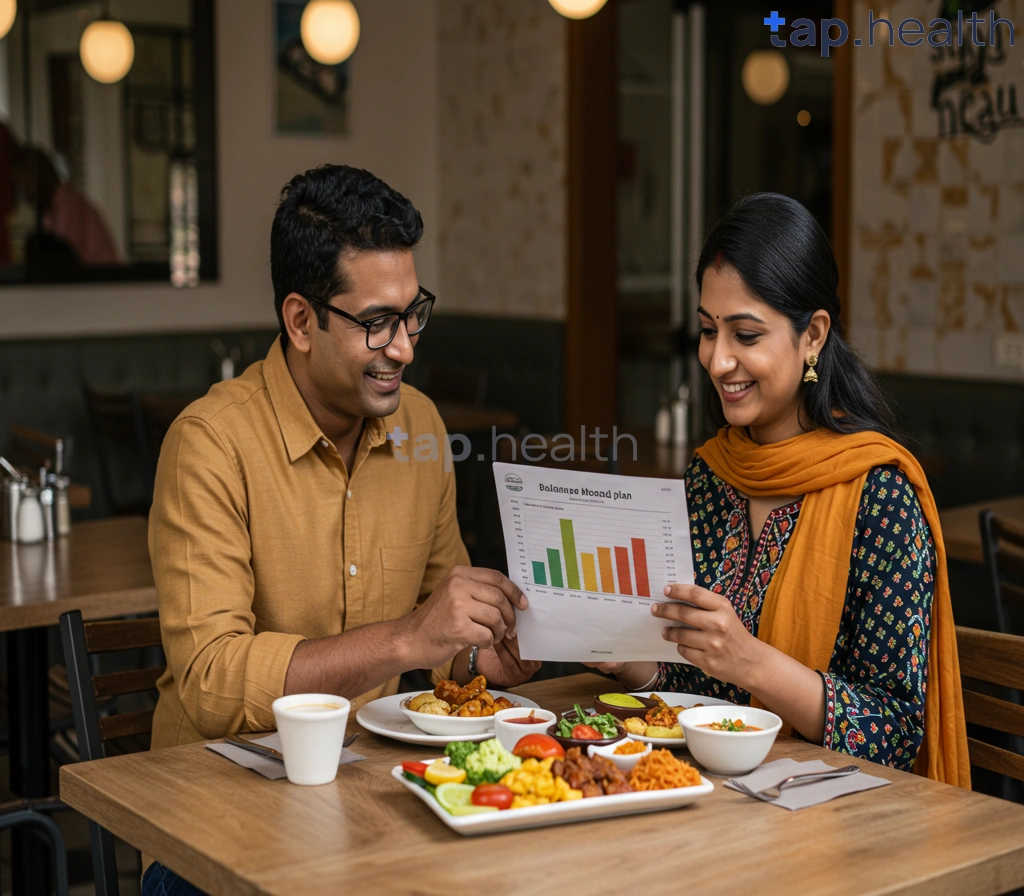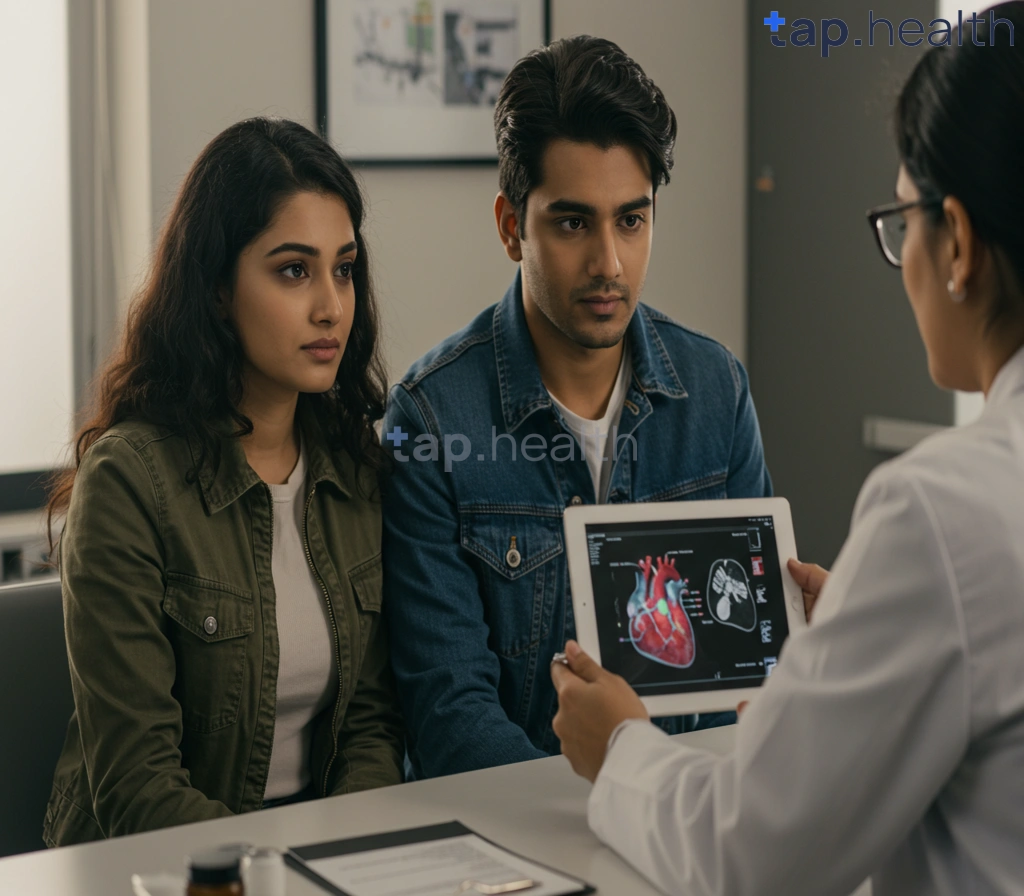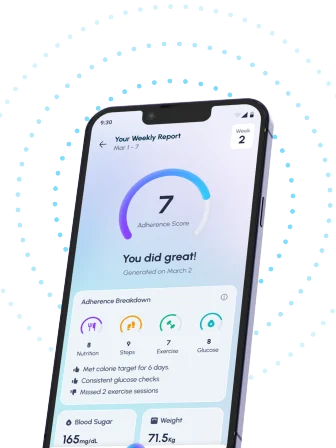Table of Contents
- Linagliptin Oral Route: A Comprehensive Guide
- Understanding Linagliptin Benefits and Side Effects
- What is Linagliptin Dosage? A Detailed Explanation
- Linagliptin vs. Other Diabetes Medications: Key Differences
- Is Linagliptin Right for You? Evaluating Treatment Options
- Frequently Asked Questions
- References
Managing type 2 diabetes can feel overwhelming, but understanding your medications is a crucial first step towards better control. This blog post focuses on Understanding Linagliptin (Oral Route): Benefits, Side Effects, and Dosage, a medication commonly prescribed to help regulate blood sugar levels. We’ll explore how linagliptin works, its potential advantages, and things you should be aware of, including possible side effects and appropriate dosage. Learning about this medication can empower you to have more informed conversations with your doctor and actively participate in your diabetes management plan. Let’s dive in!
Linagliptin Oral Route: A Comprehensive Guide
Managing type 2 diabetes effectively is crucial, especially in India and tropical countries where the prevalence is high. Up to 80% of Type 2 diabetes cases can be delayed or prevented through lifestyle changes, highlighting the importance of proactive health management. Linagliptin, an oral medication, plays a significant role in this management. It works by improving the body’s natural ability to control blood sugar levels.
Understanding Linagliptin’s Mechanism
Linagliptin is a dipeptidyl peptidase-4 (DPP-4) inhibitor. This means it helps increase the levels of incretins, hormones that stimulate insulin release after meals and reduce the production of glucagon, a hormone that raises blood sugar. This dual action helps maintain more stable blood sugar levels throughout the day.
Benefits and Considerations
The primary benefit of linagliptin is its efficacy in lowering blood sugar levels, thereby reducing the risk of complications associated with diabetes, such as heart disease, kidney disease, and nerve damage. However, like all medications, it can have side effects, which may include nausea, headache, and upper respiratory infections. It’s important to discuss any potential side effects with your doctor.
Dosage and Regional Considerations
Dosage of linagliptin varies depending on individual needs and other medications a patient may be taking. Your doctor will determine the appropriate dose for you. In tropical climates, hydration is particularly important for effective diabetes management, as dehydration can affect blood sugar control. Always follow your doctor’s advice regarding dosage and lifestyle modifications to manage your diabetes effectively. Managing underlying conditions is also crucial; for example, Liver Fibrosis, a condition affecting the liver, can impact overall health and complicate diabetes management.
Seeking Expert Advice
It’s vital to consult a healthcare professional before starting or altering any diabetes medication, including linagliptin. They can assess your individual needs, considering your medical history and lifestyle, and determine the best course of treatment for you. Remember, proactive diabetes management is key to a healthier life. Consult your doctor today to discuss the possibility of incorporating linagliptin into your treatment plan if suitable. It’s also important to be aware of other less common conditions that could interact with medications. For instance, understanding Alkaptonuria and its potential implications can be beneficial in comprehensive health management.
Understanding Linagliptin Benefits and Side Effects
Benefits of Linagliptin
Linagliptin is a type 2 diabetes medication belonging to a class of drugs called DPP-4 inhibitors. It works by increasing the levels of incretins, hormones that help your body release insulin after meals and reduce the amount of glucose your liver produces. This can lead to better blood sugar control, a crucial aspect of managing diabetes, especially prevalent in high-sugar consuming regions like India and other tropical countries. Studies show a strong correlation between high sugar intake and increased diabetes risk; for instance, daily consumption of sugary beverages raises the risk by 26%. Managing your blood sugar effectively can help prevent serious long-term complications associated with diabetes.
Side Effects of Linagliptin
While generally well-tolerated, Linagliptin can cause some side effects. Common ones include headache, upper respiratory tract infection, and nausea. Less common but more serious side effects might include pancreatitis (inflammation of the pancreas) and allergic reactions. It’s crucial to consult your doctor immediately if you experience any unusual or severe symptoms. Awareness of these potential side effects is particularly important in tropical climates where certain conditions might exacerbate reactions to medications. It’s also important to understand how other medications might interact with your diabetes treatment. For example, you might find information helpful on how Does Lexapro Affect Diabetic Medicine? Impacts, Risks & Management Tips
Dosage and Considerations for Indian and Tropical Climates
Dosage of Linagliptin is determined by your doctor based on your individual needs and health condition. Factors such as existing health issues and the climate you live in can influence how your body reacts to the medication. Always follow your doctor’s prescription and instructions carefully. Open communication with your healthcare provider is key, especially considering the impact of high temperatures and humidity prevalent in many parts of India and other tropical regions. Regular checkups and blood sugar monitoring will ensure you receive optimal management for your diabetes. Understanding the impact of underlying conditions, such as Left Ventricular Dysfunction, is also crucial for effective diabetes management.
What is Linagliptin Dosage? A Detailed Explanation
Understanding Linagliptin Dosage in the Indian and Tropical Context
Managing type 2 diabetes effectively is crucial, especially in regions like India and other tropical countries where high HbA1c levels are prevalent. Over 30% of diabetes patients report HbA1c levels above 9%, highlighting the need for appropriate treatment strategies. Linagliptin, a DPP-4 inhibitor, plays a vital role in this, but understanding the correct dosage is paramount.
Dosage Recommendations and Considerations
The standard starting dose of linagliptin is typically 5 mg once daily, regardless of food intake. However, this dosage may need adjustment based on individual patient factors, such as kidney function and other concurrent medications. Your doctor will consider your specific health status and HbA1c levels to determine the most suitable linagliptin dosage for you. Always consult your physician before starting or changing your medication regimen.
Factors Influencing Linagliptin Dosage
Several factors influence the appropriate dosage. Age, weight, and overall health play a significant role. Moreover, pre-existing kidney conditions might necessitate a lower dose to minimize potential side effects. In tropical climates, factors like dehydration and underlying health issues might also affect the optimal dosage. Open communication with your healthcare provider is essential to ensure you’re receiving the most effective and safest treatment. Understanding what constitutes a normal blood sugar level is also crucial. For example, you might wonder, Is an 80 mg/dL Level Normal? Expert Insights
Seeking Expert Advice
Remember, this information is for general understanding only and should not be considered medical advice. It’s vital to consult with your doctor or a qualified healthcare professional in India or your specific tropical region to determine the appropriate linagliptin dosage based on your individual needs and health circumstances. They can assess your HbA1c levels and other factors to create a personalized diabetes management plan. It’s also important to understand how other medications might interact with your diabetes treatment. For instance, you may want to check out our article on Can a Diabetic Take Robitussin?
Linagliptin vs. Other Diabetes Medications: Key Differences
Understanding the nuances between linagliptin and other diabetes medications is crucial, especially considering that over 75% of people with diabetes live in low- and middle-income countries, many of which are located in India and the tropical regions. This necessitates a clear understanding of treatment options readily available and affordable within these areas.
Mechanism of Action:
Unlike metformin or insulin, linagliptin belongs to a class of drugs called DPP-4 inhibitors. It works by enhancing the body’s own insulin production, primarily after meals. Other medications like sulfonylureas also stimulate insulin release but often lead to hypoglycemia (low blood sugar), a significant concern, especially in older populations.
Side Effects Profile:
Linagliptin generally has a milder side effect profile compared to some other diabetes medications. While joint pain and allergic reactions are possible, they’re less frequently reported than with certain insulin types or other oral agents. However, individual responses vary, and it’s crucial to consult a healthcare professional.
Cost and Accessibility:
Cost-effectiveness is a significant factor in choosing diabetes medication, particularly in resource-constrained settings. Linagliptin’s pricing and availability should be considered alongside the overall treatment plan and the patient’s individual circumstances. This is especially critical in Indian and tropical countries where healthcare access and affordability remain significant challenges. The choice of medication can also be influenced by factors such as the presence of kidney disease; for more information, see our article on Which Diabetes Drug is Best for Diabetics with Kidney Disease?.
Conclusion:
The choice between linagliptin and other diabetes medications depends on individual needs, considering factors like existing health conditions, cost, and accessibility. Always consult your doctor to determine the best treatment strategy for managing your diabetes effectively, particularly given the specific healthcare landscape in your region. Discuss your options thoroughly to find the most appropriate and affordable solution for your long-term health. Remember to also consider the potential role of dietary supplements, but always consult your doctor before making changes to your treatment plan. For more information, see our guide on Safe and Effective Dietary Supplements for Diabetes Care.
Is Linagliptin Right for You? Evaluating Treatment Options
Understanding Your Blood Sugar Levels
Before considering linagliptin, it’s crucial to understand your blood sugar levels. A HbA1c level below 5.7% is considered normal. However, levels between 5.7% and 6.4% indicate prediabetes, a condition where your blood sugar is higher than normal but not yet high enough to be diagnosed as type 2 diabetes. A HbA1c of 6.5% or higher signifies type 2 diabetes. Understanding your HbA1c is the first step in determining if linagliptin is an appropriate treatment option for you.
Linagliptin and its Role in Diabetes Management
Linagliptin is a type of medication called a dipeptidyl peptidase-4 (DPP-4) inhibitor. It works by helping your body release more insulin when your blood sugar is high and reducing the amount of sugar your liver produces. This can help manage blood sugar levels effectively in individuals with type 2 diabetes. In India and other tropical countries, type 2 diabetes is a significant health concern, often influenced by dietary habits and lifestyle.
Considering Alternative Treatments and Lifestyle Changes
However, linagliptin is not a one-size-fits-all solution. Your doctor will consider your overall health, other medical conditions, and your individual needs before prescribing linagliptin. Lifestyle changes, including diet and exercise, play a vital role in managing blood sugar. These are often recommended alongside medication or even as a first line of treatment. In many tropical regions, access to healthcare might be a factor, so discussing realistic options with your doctor is crucial. Before starting any new medication, it’s vital to have an open and honest discussion about the potential benefits and side effects with your healthcare professional. Managing diabetes effectively often involves considering multiple factors, and sometimes, other health concerns need addressing alongside diabetes management. For example, if you also experience frequent migraines, understanding how to manage them could be important. You can learn more about choosing the right migraine treatment by reading our guide on choosing the right migraine tablet.
Next Steps: Consulting a Doctor
Ultimately, the decision of whether linagliptin is right for you rests with your doctor. Schedule a consultation to discuss your blood sugar levels, your overall health, and explore appropriate treatment options. Remember, proactive management of diabetes is key to maintaining long-term health and well-being, especially in regions with high prevalence rates. It’s also important to remember that managing blood sugar isn’t the only aspect of overall health; digestive issues can also affect your well-being. For information on managing stomach upset, you might find our guide Choosing the Right Tablet for Stomach Upset helpful.
Frequently Asked Questions on Linagliptin
Q1. What is linagliptin and how does it work?
Linagliptin is an oral medication used to treat type 2 diabetes. It works by increasing incretin levels in your body, which helps your body release insulin when needed and reduces the production of glucagon, resulting in more stable blood sugar levels.
Q2. What are the benefits of taking linagliptin?
By helping to control blood sugar levels, linagliptin reduces the risk of developing serious complications associated with type 2 diabetes, such as heart and kidney disease.
Q3. Are there any side effects associated with linagliptin?
While generally well-tolerated, some people may experience side effects such as nausea and headaches. It’s important to discuss any concerns with your doctor.
Q4. How is linagliptin dosage determined, and are there any special considerations?
Dosage varies depending on individual needs and kidney function. Proper hydration is especially important, particularly in hot and humid climates. Your doctor will determine the right dosage for you.
Q5. What other steps should I take to manage my type 2 diabetes effectively?
Linagliptin is most effective when combined with lifestyle changes. Maintaining a healthy diet, exercising regularly, and monitoring your blood sugar are crucial for effective diabetes management. Always consult your healthcare professional for personalized advice.
References
- A Practical Guide to Integrated Type 2 Diabetes Care: https://www.hse.ie/eng/services/list/2/primarycare/east-coast-diabetes-service/management-of-type-2-diabetes/diabetes-and-pregnancy/icgp-guide-to-integrated-type-2.pdf
- Diabetes Mellitus: Understanding the Disease, Its Diagnosis, and Management Strategies in Present Scenario: https://www.ajol.info/index.php/ajbr/article/view/283152/266731




